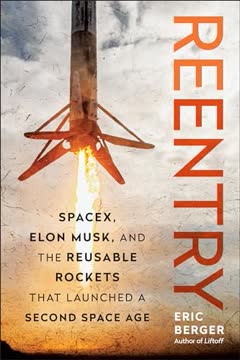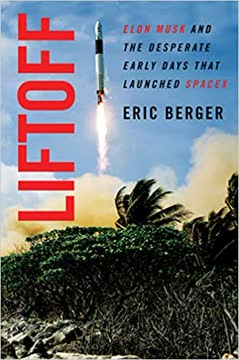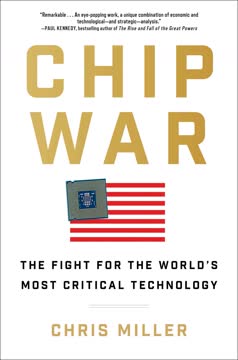Key Takeaways
1. The Skunk Works: Pioneering Stealth Technology in Aerospace
"We in the Skunk Works have built the world's first pure stealth fighter, which is designed to evade the Hawk's powerful radar tracking."
Stealth revolution. The Skunk Works, Lockheed's top-secret development division, pioneered stealth technology in the 1970s. This breakthrough allowed aircraft to become virtually invisible to radar, revolutionizing military aviation. The team developed innovative materials and designs that could deflect or absorb radar signals, making planes like the F-117 Nighthawk nearly undetectable.
Pushing boundaries. The Skunk Works operated under intense secrecy, with a small team of highly skilled engineers and designers. They worked on cutting-edge projects that often seemed impossible, from high-altitude spy planes to supersonic reconnaissance aircraft. This tight-knit group thrived on challenges, often developing solutions to problems that hadn't even been conceived of by the military.
Key stealth innovations:
- Radar-absorbing materials
- Angular, faceted designs
- Infrared signature reduction
- Acoustic stealth techniques
2. Kelly Johnson's Leadership: Pushing Boundaries in Aircraft Design
"Kelly ruled by his bad temper. Ben Rich rules with those damned bad jokes."
Visionary leadership. Clarence "Kelly" Johnson, the founder of the Skunk Works, was a brilliant and demanding leader who pushed his team to achieve the impossible. His leadership style was characterized by high standards, quick decision-making, and a willingness to take calculated risks. Johnson's vision and drive were instrumental in creating some of the most innovative aircraft in history.
Fostering innovation. Johnson created an environment that encouraged creativity and out-of-the-box thinking. He kept bureaucracy to a minimum, allowing his engineers to focus on solving problems rather than navigating red tape. This approach led to the development of groundbreaking aircraft like the U-2 and SR-71 Blackbird.
Kelly's Rules for Skunk Works:
- Small, focused teams
- Simple drawing and documentation systems
- Strong but limited inspection procedures
- Close cooperation between engineering and manufacturing
3. The U-2 Spy Plane: Revolutionizing Aerial Reconnaissance
"The U-2 overflights of the Soviet Union provided us with the greatest intelligence breakthrough of the twentieth century."
Cold War game-changer. The U-2 spy plane, developed in the 1950s, gave the United States unprecedented ability to gather intelligence on the Soviet Union. Flying at altitudes over 70,000 feet, it could photograph vast areas of denied territory, providing crucial information on military installations, missile sites, and industrial capabilities.
Technical marvel. The U-2's design pushed the limits of aircraft technology. Its lightweight structure and long, glider-like wings allowed it to reach extreme altitudes, but also made it challenging to fly. Pilots had to wear pressure suits similar to those used by astronauts and faced constant dangers from equipment failures and hostile fire.
U-2 capabilities:
- 70,000+ foot operating altitude
- 3,000+ mile range
- High-resolution camera systems
- Ability to carry various sensor packages
4. The SR-71 Blackbird: Breaking Speed and Altitude Records
"Even today, that feat seems nothing less than miraculous."
Unmatched performance. The SR-71 Blackbird, nicknamed "Habu," was a technological marvel that still holds speed and altitude records decades after its retirement. Capable of flying at over Mach 3 and altitudes above 80,000 feet, it could outrun any threat it encountered. The Blackbird's incredible speed and height made it an invaluable asset for reconnaissance missions.
Engineering challenges. Developing an aircraft that could operate at such extreme speeds and altitudes required numerous innovations. The Skunk Works team had to solve problems with heat management, fuel systems, and materials science. The plane's skin was made of titanium, which expanded significantly at high speeds, requiring unique design solutions.
SR-71 innovations:
- Specialized high-temperature fuel (JP-7)
- Titanium airframe construction
- Unique engine design with movable shock cones
- Sophisticated navigation and sensor systems
5. Stealth Fighter Development: Overcoming Technical Challenges
"To be able to fly sustained at such heights and speeds would require radical departures in how we designed and built propulsion systems."
Pushing boundaries. The development of the F-117 Nighthawk stealth fighter presented unprecedented challenges. The team had to create an aircraft that was not only invisible to radar but also capable of high performance. This required rethinking every aspect of aircraft design, from aerodynamics to materials science.
Innovative solutions. The Skunk Works team developed numerous groundbreaking technologies to make stealth a reality. They created radar-absorbing materials, designed unique angular shapes to deflect radar signals, and developed new manufacturing techniques to maintain the precise tolerances required for stealth.
Key stealth fighter innovations:
- Faceted design to reflect radar away from receivers
- Radar-absorbing coatings and materials
- Infrared signature reduction systems
- Specialized flight control systems to manage unstable design
6. Navigating Government Contracts and Military Bureaucracy
"Starve before doing business with the damned Navy. They don't know what in hell they want and will drive you up a wall before they break either your heart or a more exposed part of your anatomy."
Bureaucratic challenges. Working on top-secret military projects required navigating complex government contracts and dealing with often frustrating bureaucracy. The Skunk Works had to balance the demands of military officials, changing requirements, and tight security restrictions while still maintaining their innovative edge.
Building relationships. Success often depended on cultivating strong relationships with key decision-makers in the military and government. The Skunk Works team had to be adept at communicating complex technical concepts to non-experts and advocating for their designs in the face of skepticism or competing interests.
Strategies for success:
- Maintain clear communication with clients
- Anticipate changing requirements
- Build trust through consistent performance
- Leverage past successes to win new contracts
7. Innovation and Problem-Solving in Aerospace Engineering
"If we couldn't get her airborne, maybe we could sell her as a piece of modern art sculpture."
Creative solutions. The Skunk Works thrived on tackling seemingly impossible engineering challenges. Their success was built on a culture that encouraged creative thinking and unconventional approaches to problem-solving. Engineers were given the freedom to explore radical ideas and the resources to rapidly prototype and test their concepts.
Rapid iteration. A key aspect of the Skunk Works' success was their ability to quickly iterate designs and learn from failures. They embraced a "fail fast, learn fast" philosophy long before it became popular in Silicon Valley. This approach allowed them to make rapid progress on complex projects and stay ahead of competitors.
Problem-solving techniques:
- Cross-disciplinary collaboration
- Rapid prototyping and testing
- Embracing failure as a learning opportunity
- Challenging conventional wisdom
8. The Legacy of the Skunk Works: Shaping Modern Aviation
"The Skunk Works is a national treasure. The nation is in your debt for stealth and all the other miracles you people have managed to pull off over the years."
Enduring impact. The innovations developed by the Skunk Works have had a lasting impact on aviation and beyond. Stealth technology has become a cornerstone of modern military aircraft design, while advances in materials science, propulsion, and aerodynamics have influenced civilian aviation as well.
Inspiring innovation. The Skunk Works model of small, focused teams working on cutting-edge projects has inspired similar approaches in other industries. Their success demonstrates the power of giving talented individuals the freedom to innovate without excessive bureaucratic interference.
Lasting contributions:
- Stealth technology
- High-altitude reconnaissance capabilities
- Supersonic and hypersonic flight research
- Advanced materials and manufacturing techniques
Last updated:
FAQ
What's Skunk Works: A Personal Memoir of My Year at Lockheed about?
- Focus on Stealth Technology: The book centers on the development of stealth technology at Lockheed's Skunk Works, particularly the F-117A stealth fighter, highlighting the challenges and breakthroughs in creating radar-evading aircraft.
- Personal Memoir: Authored by Ben R. Rich, it offers a first-hand account of his leadership and experiences at Skunk Works, following Kelly Johnson's legacy, and provides insights into the culture of innovation and secrecy.
- Historical Context: Set during the Cold War, the narrative underscores the urgency of developing advanced military technology to ensure national security.
Why should I read Skunk Works?
- Insight into Innovation: The book provides a unique perspective on developing groundbreaking technology in high-pressure environments, showcasing creative processes and problem-solving strategies.
- Leadership Lessons: Rich shares valuable lessons on leadership, teamwork, and fostering a culture of trust and creativity, offering practical advice for management and collaboration.
- Historical Significance: It offers a detailed account of stealth technology's development and its impact on military strategy, crucial for those interested in aviation, defense, and history.
What are the key takeaways of Skunk Works?
- Emphasis on Secrecy: The importance of confidentiality in defense projects is highlighted, with Rich emphasizing that sensitive information must remain within the organization.
- Innovation Under Pressure: The Skunk Works thrived on tight deadlines and high expectations, leading to rapid technological advancements, encapsulated by the motto “Be quick, be quiet, be on time.”
- Teamwork and Trust: Collaboration and trust among team members were crucial for achieving ambitious goals, with Rich fostering an environment where engineers felt empowered to innovate.
What are the best quotes from Skunk Works and what do they mean?
- “Be quick, be quiet, be on time.”: This motto reflects the Skunk Works' operational philosophy, emphasizing efficiency, discretion, and punctuality in project execution.
- “If the other side didn’t know these aircraft existed until we introduced them in action, they would be that much farther behind in building defenses to bring them down.”: Highlights the strategic advantage of surprise in military operations, particularly with stealth technology.
- “Goddam it, Rich, why in hell did you use a damned wooden-framed stove? That was just asking for trouble.”: A humorous exchange illustrating the challenges and risks in innovative engineering and the high standards set by Kelly Johnson.
How did the development of the F-117A change military aviation?
- Revolutionary Stealth Technology: The F-117A introduced a new paradigm in military aviation, allowing aircraft to evade radar detection effectively, altering air mission planning and execution.
- Precision Bombing: Its ability to deliver precision strikes with minimal collateral damage transformed air combat strategies, with Rich noting its accuracy in targeting.
- Strategic Advantage: The stealth fighter provided the U.S. military with a significant edge, conducting operations undetected and forcing adversaries to rethink air defense strategies.
What role did Kelly Johnson play in the Skunk Works?
- Visionary Leader: Johnson was the driving force behind the Skunk Works, known for his innovative designs and engineering prowess, establishing the culture of secrecy and efficiency.
- Mentor to Rich: As Rich’s predecessor, Johnson provided guidance and support, shaping Rich’s leadership and project management approach.
- Pioneering Engineer: His contributions, including the U-2 and SR-71 designs, set benchmarks for performance and capability, influencing aerospace engineering today.
How did the Skunk Works maintain its innovative culture?
- Small, Cohesive Teams: Operated with small teams of handpicked engineers, fostering close collaboration and communication, allowing rapid decision-making and problem-solving.
- Empowerment and Trust: Rich encouraged team ownership and independent decision-making, leading to a culture of innovation where employees felt valued and motivated.
- Focus on Results: Emphasizing quick and efficient results kept the team focused on goals, with Rich promoting urgency and accountability.
What challenges did Ben R. Rich face while leading the Skunk Works?
- Budget Constraints: Navigated financial difficulties post-Vietnam War and corporate scandals, securing funding while managing costs effectively.
- High Expectations: Faced immense pressure to deliver advanced technology quickly, balancing innovation with production and testing practicalities.
- Maintaining Secrecy: Ensured project confidentiality amidst increasing scrutiny, implementing strict security measures to protect sensitive information.
What was the significance of the U-2 and SR-71 programs?
- Intelligence Gathering: Crucial for Cold War intelligence, providing vital information on Soviet capabilities and movements.
- Technological Advancements: Pushed aerospace technology boundaries, influencing future aircraft designs with advancements in materials, aerodynamics, and stealth.
- National Security Impact: Their successful operation significantly impacted national security, helping prevent conflicts and maintain strategic advantages.
How did the Skunk Works adapt to changing military needs?
- Transition to Drones: Shifted focus from manned aircraft to unmanned drones, recognizing the evolving nature of warfare and the need for risk-free surveillance.
- Focus on Stealth Technology: Developed stealth technology to avoid detection in hostile environments, adapting to new military requirements.
- Rapid Prototyping: Emphasized rapid prototyping to respond quickly to changing needs, delivering effective solutions in a timely manner.
What lessons on leadership does Rich share in Skunk Works?
- Empowerment of Teams: Highlights the importance of empowering teams to innovate, leading to greater creativity and productivity.
- Decisive Action: Advocates for timely decision-making, even amidst uncertainty, to prevent costly delays.
- Building Trust: Emphasizes building trust within teams, fostering collaboration and a shared commitment to achieving goals.
How did the Skunk Works influence the aerospace industry?
- Setting Standards: Set new standards for innovation and efficiency, influencing R&D and project management approaches in other companies.
- Inspiring Future Generations: Inspired future engineers and designers to pursue aerospace careers and push technological boundaries.
- Legacy of Innovation: The principles and practices established continue to serve as a model for fostering innovation and adaptability in rapidly changing environments.
Review Summary
Skunk Works is highly praised for its compelling behind-the-scenes look at Lockheed's secretive aerospace division. Readers appreciate Rich's insider perspective on iconic aircraft like the U-2, SR-71, and F-117. The book offers fascinating technical details, Cold War history, and insights into innovative management practices. Many reviewers found it engrossing and accessible, even for non-engineers. Some note the dated social perspectives but still consider it a must-read for aviation enthusiasts and those interested in technological innovation.
Similar Books








Download PDF
Download EPUB
.epub digital book format is ideal for reading ebooks on phones, tablets, and e-readers.




